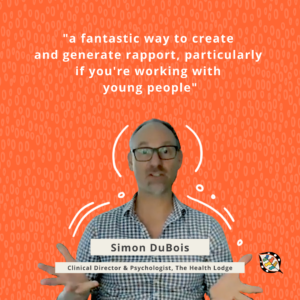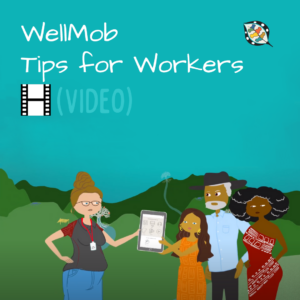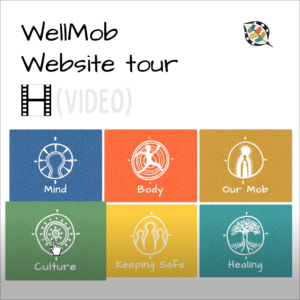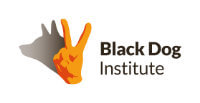Written by Angela Sheridan, WellMob
The WellMob website is an online library of Indigenous social and emotional wellbeing (SEWB) resources. These include videos, apps, fact sheets, websites, and podcasts. These can be used in session with Indigenous clients or for worker self-care and professional development (How to use online resources found on WellMob to be more culturally responsive in your clinical work).
Using online resources is especially useful for non-Indigenous workers to connect with their Indigenous clients through ‘third party’ information. The resources can be used to engage in conversation with Indigenous clients to help them reach health and wellbeing goals. Many of these resources bridge health literacy and cultural gaps not met by current mainstream mental health resources. Using culturally safe and responsive in-session can help unpack health issues together and build rapport.

How a psychologist uses technology to connect with young people
Watch this video from non-Indigenous psychologist, Simon Dubois, talking about how technology and the WellMob website can help you connect with our young mob.
1. Consider how digital tools will fit into your role and work?
- How often do you see your client?
- How long is your consult with them?
- Can you spend some time getting familiar with the WellMob website and resources? Set aside 10 minutes each week yourself to navigate the website and feel more comfortable with it in-session.
Stay connected to WellMob’s social media and e-newsletter for updates on new resources which are added each month. https://linktr.ee/wellmob
2. Ask and assess: in-session have a yarn with your clients about:
- What type of technology do they have?
- Do they use a mobile phone or computer to access web-based resources?
- Do they have regular internet connectivity?
- TIP: If they have no phone credit or Wi-Fi – suggest password protected places to access free Wi-Fi like the local public library, school, community centre, McDonalds or shopping centres.
- Is literacy possibly an issue? TIP: Lower English and health literacy levels are common so audio or video resources in plain language may suit better.
3. Search resources together
- Navigate the website together in session. TIP: The main topic tiles can short-cut a search to relevant issues.
- Search with the client in-session using key words or topic search.
- Ask them whether there is something specific they would like to review together OR
- Have a resource in mind that you are already familiar with to go through together e.g. a short video or a guided meditation. TIP: Talk about how they could use it themselves and why it could be beneficial for their wellbeing.
4. Match the right resource for your client’s situation
TIP: Knowing how tech savvy your client is will guide what type of resources may work best for them e.g. elders often prefer printable pdfs, young people prefer videos.
- Story based resources can give inspiration and be personally relatable.
- Fact sheets or health promotion videos can help normalise a condition and unpack its components with out added stigma or shame.
- Some mood monitoring apps offer a regular check in and self-management hints.
5. Use and share it with your client
- Go through a resource in-session together so that they feel comfortable to use it at home.
- Ask them what they think about it? Do they like it and feel like it will benefit them?
- Download then and there and go through the set up process if is an app.
- Sometimes there just isn’t time… note that there is a share function on the resource page that is a quick way to email it to your client if you run out of time to go through it.
6. Evaluate it with your client
On a return consult with your client:
- Ask them if it helped?
- How did they use it?
- Reflect on what other resources may work form them based on their use of this resources.
- Recommend other resources from WellMob and check back in with them next time about it.







